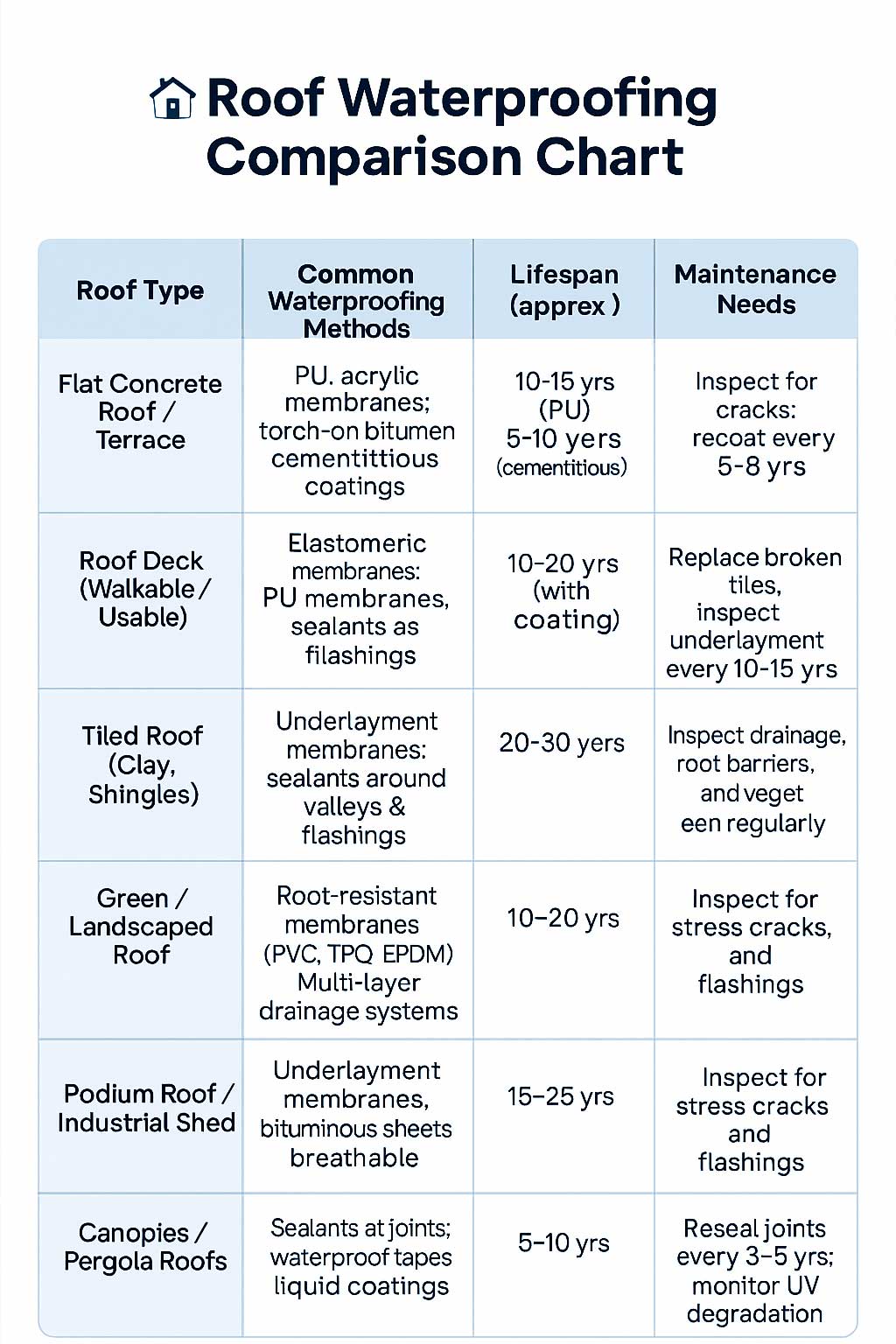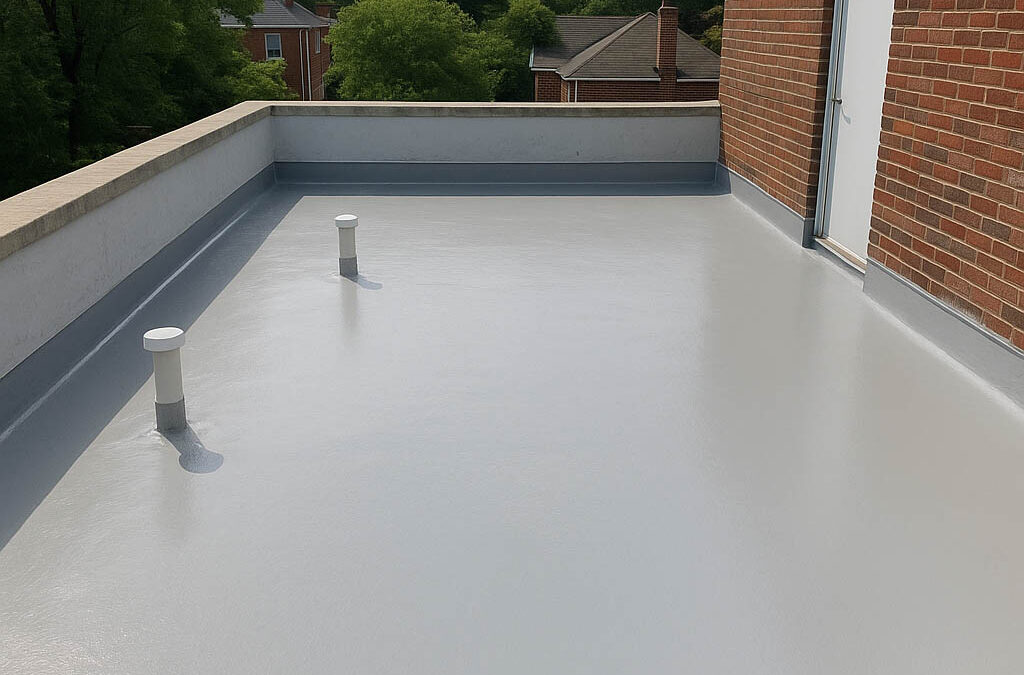Choosing the right roof waterproofing method can make all the difference in protecting your property from costly leaks and water damage. With the Gold Coast’s mix of heavy rain, high humidity, and coastal conditions, a one-size-fits-all approach simply doesn’t work. Different roof types, from tiled and metal roofs to flat concrete rooftop, require tailored solutions to ensure long-lasting protection.
🏠 Roof Waterproofing Comparison Chart
Conclusion & Expert Advice
Choosing the right roof waterproofing method depends on your roof type, usage, and exposure to weather. While PU membranes offer flexibility and durability for flat surfaces, tiled and pitched roofs benefit more from layered underlayment’s and strategic sealing. Green roofs and roof decks require multi-layer systems with drainage and protection to ensure long-term performance.
Pro Tip:
Always pair waterproofing with regular inspections—especially after heavy rain or seasonal changes. Early detection of cracks, joint failures, or drainage issues can save thousands in repairs.
If you’re unsure which system suits your property best, consult a licensed roof waterproofing specialist familiar with local climate and QBCC standards. A tailored roof deck waterproofing solution ensures durability, compliance, and peace of mind.

Roof Waterproofing Chart: Download or share for free
